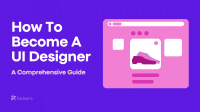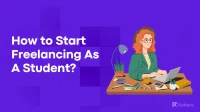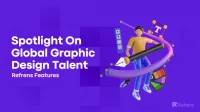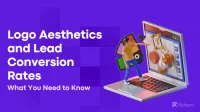Much like any freelance career, becoming a graphic designer can be daunting. So if you’re reading this, you’ve taken a step in the right direction. We’ll discuss actionable steps on how to start freelancing as a graphic designer.
If you’re wondering why you should pursue graphic design, take a look at these statistics.
The graphic design market in the US alone is $ 14.1 billion, which is a 2.3% growth in 2022. With the growth in digital advertising, there’s an increasing need for graphic designers.
For instance, a recent Venngage survey revealed that 63.2% of marketers rely heavily on visual content as part of their marketing strategy.
Here’s how you can become part of this growing industry, become your own boss, and build a successful graphic design business or career.
Start Freelancing as a Graphic Designer: 7 Easy Steps
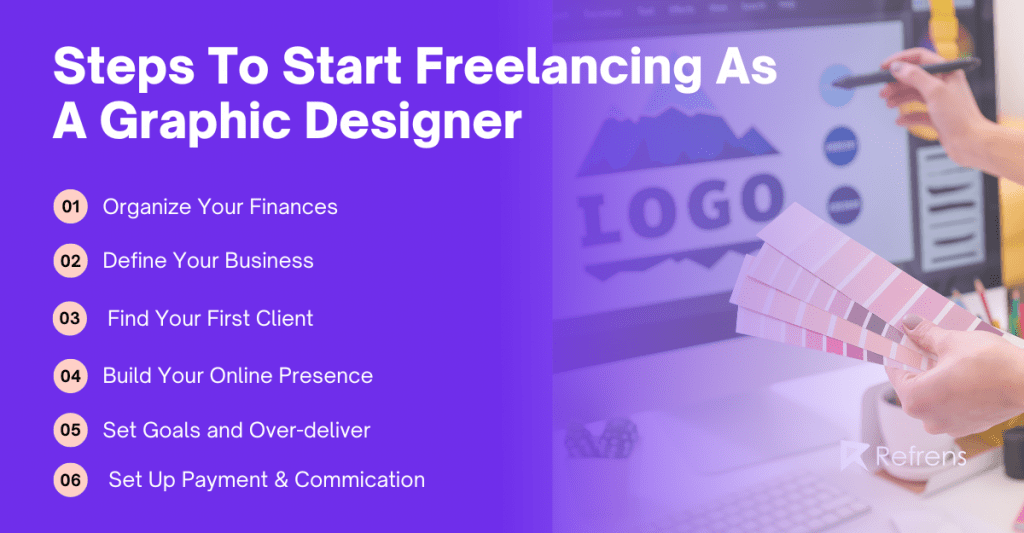
Whether you’re just starting out as a designer or experienced multiple categories, these graphic design tips work well enough for all. Here are a few steps mentioned that help your freelancing journey.
1. Organize Your Finances
To avoid complications along the way, the first thing you need to do is make sure you get your finances right before you start freelancing as a graphic designer. This is especially so if you plan on pursuing this path full-time.
Have a personal budget that will sustain you before your freelance business picks up. If possible, you can cut back on your expenses as well. Be sure to have finances that can sustain you for at least six months.
Also, you’ll need to know how much you’ll spend on your business. For instance, you may need to pay for graphic design software to create a website at some point, and so on.
2. Define Your Business
The second step to being a freelance graphic designer is to visualize what your business will look like. If you’re transitioning from employment, you probably already have your niche figured out.
However, if you’re a newbie freelancer, here are some niches you can narrow down to:
- Graphic logo design
- User Interface design
- Social media graphics
- Sales funnel design
- Gaming industry designs
- Data visualization design
- Custom illustrations and designs
You can choose a niche in graphic design that interests you the most, or decide to go in as a generalist if you haven’t figured that out yet.
You’ll also need to identify your ideal client and can choose to work with businesses from a specific industry.
Research industries you’re familiar with just to have a narrowed-down approach to the clients you’ll want to work with. For instance, if your niche is UI/UX Design, then you can target UI development companies, and so on.
Then, decide on the image you’d want for your brand. This includes sourcing ideas for your logo design and making sure your social media platforms reflect your image.
Besides being great at graphic design, when you start freelancing, you’ll also need to be good at being a businessperson. For this, you may need to seek advice from freelance business people you know.
3. Find Your First Client
Part of the many challenges you face when you start freelancing as a graphic designer is landing your first client.
This is a crucial step that is likely to set the pace for many other aspects of your freelance business.
While it’s okay to build a portfolio, find a business name, or design your website, this shouldn’t be the first thing you do. Once you’ve narrowed down your niche and idealized prospect clients, getting your first task should be your priority.
It’ll give you momentum and motivate you even more to build your freelancing career, especially when you hire a professional graphic designer. Here are some ways you can land your first graphic design client:
- Use freelance job sites like Refrens, Upwork, and Fiverr
- Join graphic design marketplaces like Vendasta and Inkd
- Cold pitching or cold calling businesses
- Explore your personal networks to see if you can find an opportunity
4. Build Your Online Presence
Once you have a few lineups for your first tasks as a freelance graphic design, then you can start solidifying your online presence. You can settle on your brand name and logo if you haven’t yet.
Then, you’ll need an online portfolio where you can display your work for clients to see. If you haven’t budgeted for a website yet, you can have your portfolio separately.
Here’s an example from a popular logo designer.
Alternatively, have your portfolio as a page on your website, like so.
Having a website helps give your business authority and strengthen your online presence. As a marketing tool, you can learn how to write blog posts and create other content on your website to boost your SEO.
When creating your website, you have the flexibility to choose from various WordPress hosting providers accessible on the internet, such as Bluehost, WpEngine, and others. Additionally, you can also explore NameHero, which is a reputable website hosting provider recommended for your client’s needs.
Make sure you build a more active social media presence and display your work on your platforms.
Sites such as Instagram, Facebook, LinkedIn, Twitter, and TikTok are crucial digital marketing platforms that you can use to advertise your work and get more clients. By incorporating effective digital marketing practices to boost engagement, you can easily make enticing videos related to your work and skills using video editors and publish them on these social platforms to gain the attention of your target audience. This can help you attract new customers.
5. Set Goals and Over-deliver
Here, you’ll set goals surrounding your income, workload, and marketing.
You’ll need to set financial goals, determine your pricing for your services, and establish a minimum revenue target you aim to achieve. This will also help you filter through the clients you take on.
You’ll also need to set marketing goals to ensure you keep your freelance graphic design business growing.
Lastly, know how much work you can handle for your clients. This way you’ll regulate your applications, plan your workload, and make sure you can take on work you can handle.
Then, set reasonable deadlines to avoid disappointing your clients or putting too much pressure on yourself. This way, you’ll complete your tasks early, have time to over-deliver, and leave your clients happy.
This is how you get repeat clients as well as referrals.
6. Set Up Payment and Communication Systems
As your freelancing business starts to thrive, you’ll need to get systems in place to streamline everything.
The first is an invoicing system, to keep track of every payment. You’ll need to collect payments on time and monitor your finances.
You’ll also need to master how to communicate with your clients better. Some basic public relations skills such as creating killer proposals, drafting contracts, and communicating with clients on time will come in handy.
7. Always Look For New Clients
You want to keep a steady stream of income for your business; at least that’s every freelancer’s goal. And it all comes down to planning to build long-term relationships with clients.
Once you have a few long-term clients, don’t stop looking for more. You can switch between looking for design work aggressively when your workload decreases and less when your workload is higher.
All in all, make sure you’re always looking for new leads for your freelance business.
Time To Start Your Freelance Graphic Design Business
There you have it! Everything you need to know to start freelancing as a graphic designer. It may all seem challenging, but graphic design is a rewarding career you should take a leap.
Besides building something successful, with freelancing, you’ll have the chance to do so on your terms.
It will take time and effort to build a successful business, so you should be ready to put in the work. Hopefully, this post makes it all easier.


